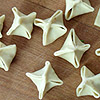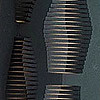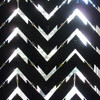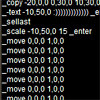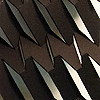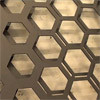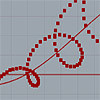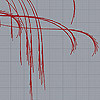A mid-15th-century Ottoman recipe, mantı is filled with pounded lamb and crushed chickpeas, steamed, and served topped with yogurt mixed with crushed garlic and sprinkled with sumac. In modern Turkish cuisine, mantı is typically served topped with yogurt and garlic, and spiced with red pepper powder and melted butter, and with ground sumac and/or dried mint. Although there are many different variations of mantı in terms of shape and way of […]
May 2014
Another Turkish translation from my Ph.D. The paper is titled “CAD Smart Objects: Potentials and Limitations”, presented by Magdy Ibrahim, Robert Krawczyk, and George Shcipporeit at the 21st eCAADe Symposium in 2003. It is a brief introduction to today’s CAD and BIM concepts. You can find this paper in CuminCAD’s database. Below is the Turkish version, which I translated in 2005: CAD SMART OBJECTS: POTENTIALS AND LIMITATIONSMagdy Ibrahim, Robert Krawczyk, […]
This is my Turkish translation of the 1997 article by Charles Jencks, “Nonlinear Architecture: New Science = New Architecture?”. Very short but the cult text explains the emergence of a new technology-based architecture. Although very old, it is still an up-to-date discussion for computational design research. NON-LINEAR ARCHITECTURE: NEW SCIENCE = NEW ARCHITECTURE ? Charles Jencks Yüz yıldan beri pekçok mimar yeni oluşan yaşam koşullarının yeni bir mimarlığı doğuracağını söylemişlerdir. […]
Third and the final outcome of the Animate Patterning workshop is coordinated by Mehmet Ali. Students tried to develop a kirigami-like surface animation (which is also a good solution to my one-servo question) while they studies numerous variations. They ended up with this panel, ready to be moved by Arduino; The workshop is organized together with Mehmet Ali Altın and Fulya Akipek. Students are, Murat Akırmak, Gizem Ceyhanlıer, Cem Kıyak, […]
Here is another student project from the three-day workshop we conducted together with Fulya Akipek and Mehmet Ali Altın. Briefly, the idea was to develop a system of cogwheels that spin together to animate an entire pattern. It was about to develop a kinetic system with a simple Arduino-based setup, probably with one servo and a motion sensor. The integration of the cogwheels system and the underlying pattern was interesting […]
This is one of the works of the three-day workshop at Eskişehir Anadolu University, called “Animate Patterning“. This project is based on our previous folding experiment posted here, while students advanced it, testing a folding style called “Miura”. They built a 2.5m x 1m folding pattern, explained briefly here. After analyzing, and testing the folding technique, they drew the tessellation composed of a single parallelogram. They joined the structure together with hinges and […]
It seems that our first-year students of architecture, interior design, and industrial design take Rhino’s macro functionality very seriously. This encourages us to study algorithmic techniques more and more in the freshman year Design Computing class. Below are some of the results of this week’s assignment. They explicated the modeling process of their prototiles into macro codes, ready to be molded. Zeynep Dutipek developed the macro to reconstruct her prototile with different parameters. She […]
Inspired by this cut-fold pattern, we developed a prototype with Fulya Akipek. The first experiments were made from 3mm thick foamboards and they worked very well with 50×70 plates. However, when the project gets bigger and bigger, we needed to add a joint detail and use 5mm thick foamboards to achieve our goal (that is to develop a 1m by 2.5m shutter system). Then, we tried to animate its folding behavior by […]
This is one of the ideas we’ve tested for the workshop “Animate Patterning“. Inspired by this work, Apart from the pattern that turns around, the torque, rotation radius and speed of the servo, weight, connection detail, and a number of foamboards become important inputs for this design. In the three-day workshop, one group of students interpreted this idea of using several moving layers and creating an emergent pattern at the […]
This is a Cycloid-like family of curves, generated by its classical description: a rolling circle. I had several other studies on similar topics before. In this cycloid experiment, I used Grasshopper in which, we don’t need to roll the circle. Instead, we can divide a parametric curve, utilizing data lists to simply rotate a circle around it. Finally, evaluating the circle repeatedly creates a Cycloid-like result. I found this as […]
While testing Anemone components for Grasshopper, I accidentally generated these branches by looping. In fact, I was trying to develop the definition that mimics the well-known “Arch SED” component method. This method uses the tangent vectors for the endpoints of the arcs. Then, it iterates the process in a random fashion so that the branches (arcs) join nicely. Anyway, this definition develops new branches from a previous one. It does […]
Here are two macros that automate some of the classical structural styles in today’s architectural geometry. They could be developed more to include joint details, however. It is a relaxing experience to study macros when the process doesn’t have algorithmic expressions (such as recursion, iteration, or conditionals). It is today’s subject in the first-year design computing course at İBU. The first one requires at least two curves already present in order […]

